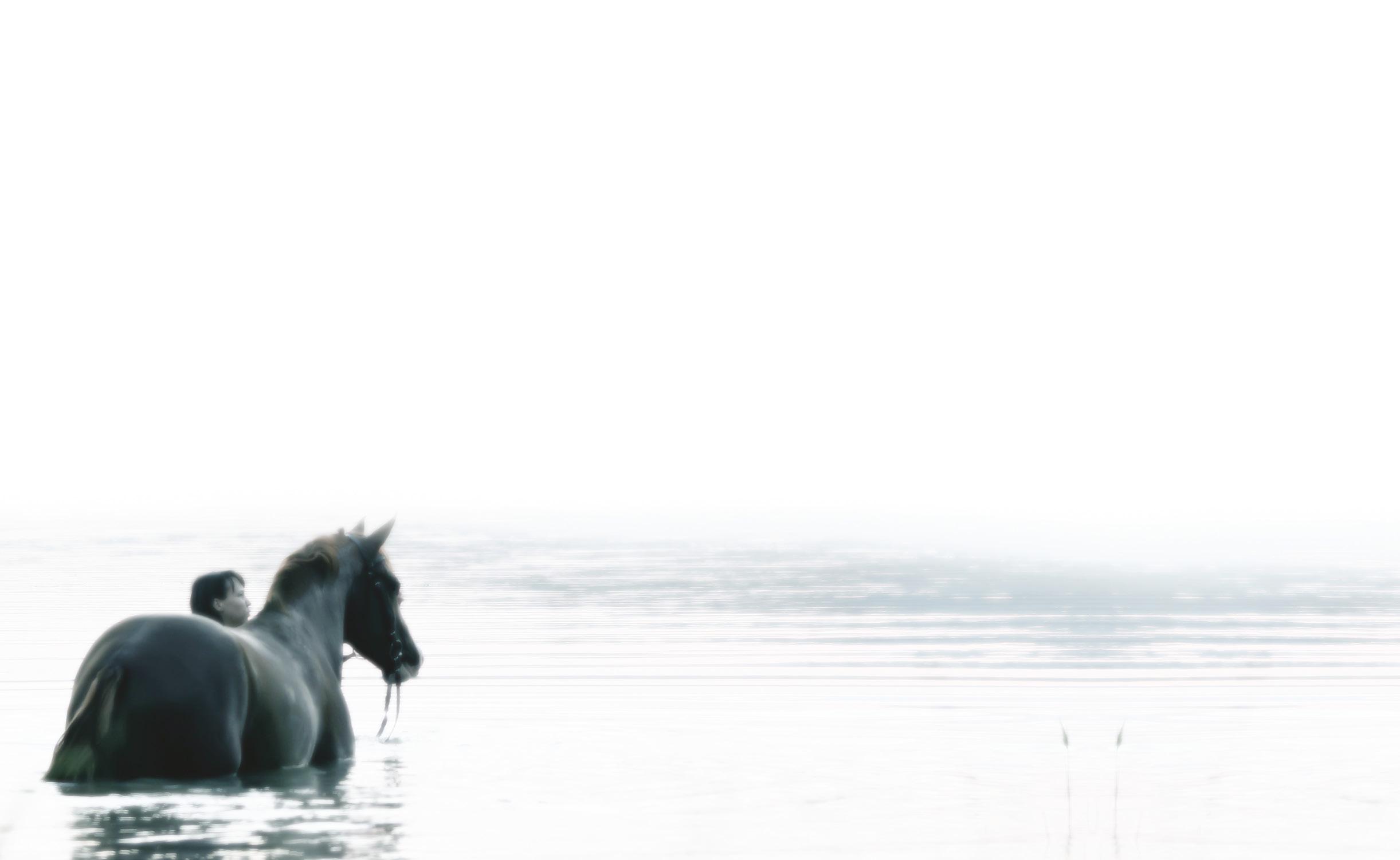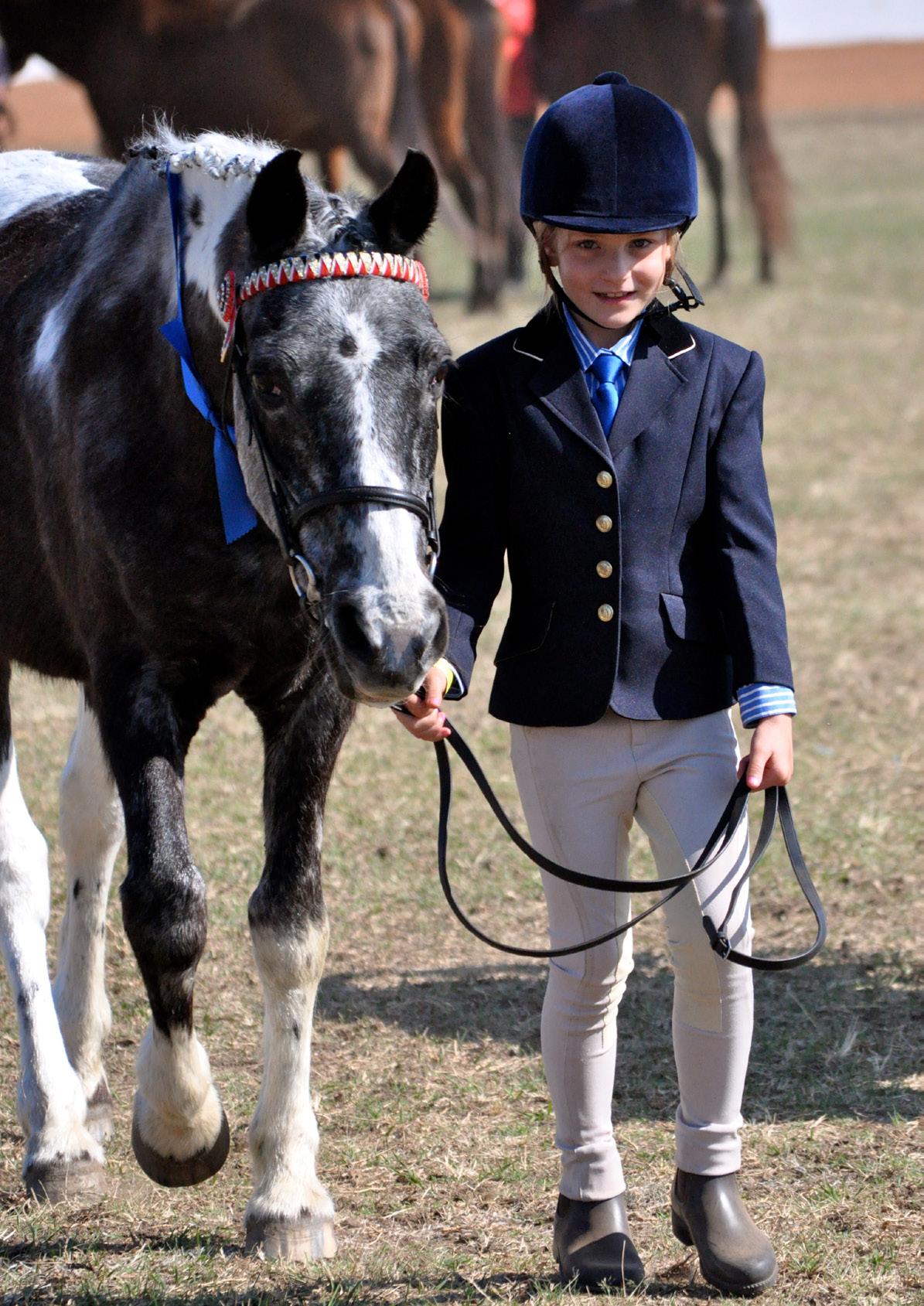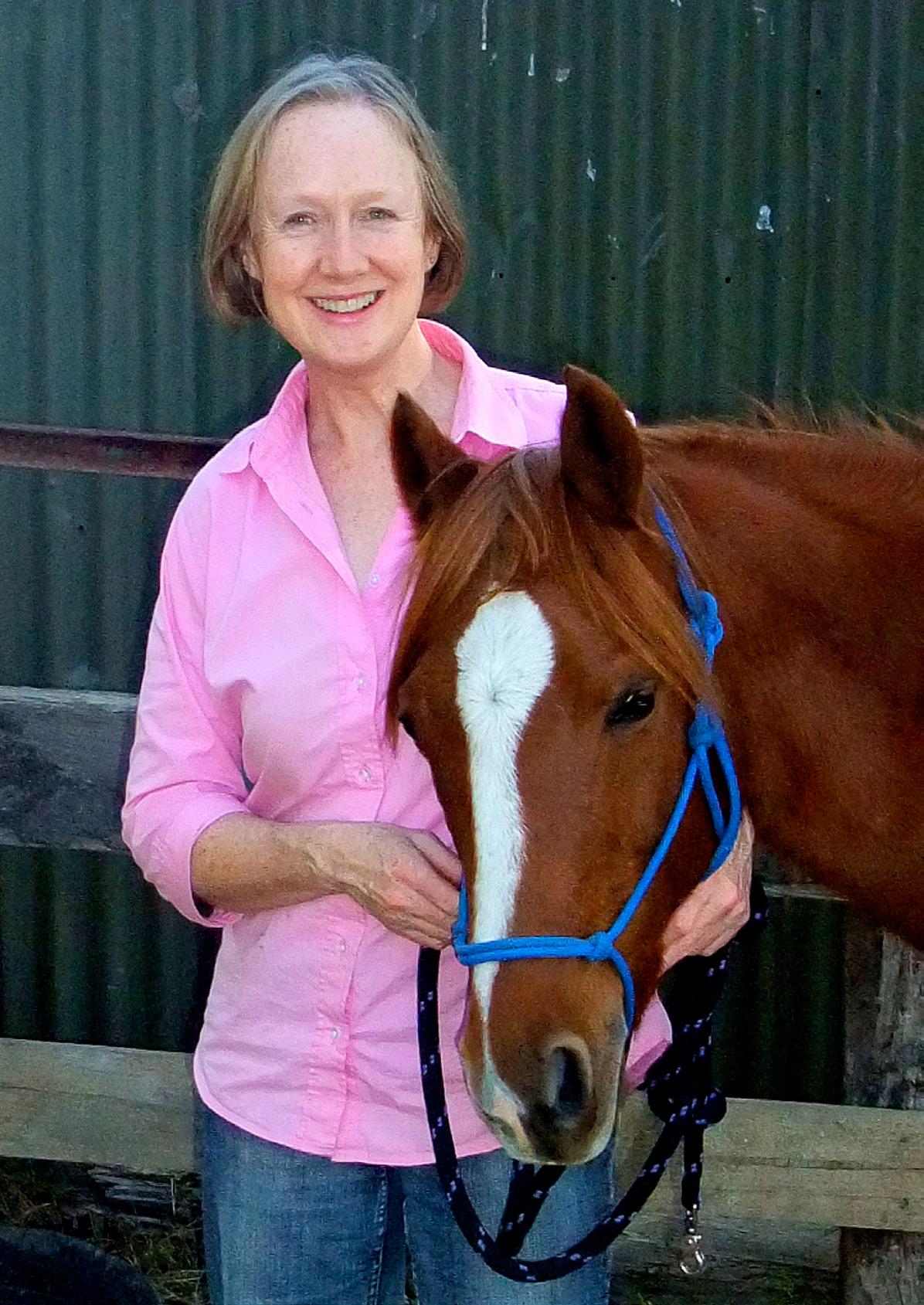
16 minute read
Spotlight on Olivia Hamood
SPOTLIGHT
It’s a busy life
Advertisement
Having horses in your blood doesn’t necessarily make equestrian success a foregone conclusion. Without single-minded focus and sheer hard work there are never any guarantees, writes AMANDA MAC.
I’m talking to champion showjumper Olivia Hamood. It’s late afternoon and she’s just finished riding for the day – not that that means work is over and done with, not by a long chalk. There’s plenty still to do.
We’ve been discussing what it takes to be successful in this sport, when Olivia remarks: “It’s probably not what people think it is when they see us at shows. We’re getting garlands of flowers and having a great time but that’s just a small part of it. Everything that you do at home, all the hard yards, the blood, sweat and tears, the disappointments, that’s what you have to keep on pushing through and not give up, never give up.”
The words of someone who knows that great achievements in the show ring come with a sizeable price tag, even if you were born into a family immersed in the equestrian world. Olivia’s mother is well-known Australian showjumper Paula Hamood, while her father David was for many years involved in the Thoroughbred racing industry.
Together, Paula and David established Glen Haven Park in Kilcoy, 70 minutes north-west of Brisbane, Queensland. There they specialise in producing, campaigning and selling top quality horses to an international market. It’s a family owned and operated business. David is the manager of the nearly 486 hectare property, Paula is a rider and NCAS Level 2 Jumping Coach, and Olivia manages a very busy stable as well as competing with her team, something she does extremely well.
That Olivia’s earliest memories include horses shouldn’t come as a surprise: “I think I was still crawling when I first sat on a horse,” she says, “and I’ve probably been riding since I was around two-yearsold. I started off on a Shetland pony, as most kids do, and got bucked off nearly every day.” Safe to say that never give up was a lesson learned early.
I wonder whether Olivia’s obsession with jumping was through nature, nurture, or a little of both. “It was entirely my decision, but obviously I think that growing up with a mother who was heavily involved in the show jumping world was an influence. But it’s what I was always passionate about and wanted to pursue, and I’ve never seriously thought about any other discipline. I was probably four years old when I knew show jumping was it. I used to pretend I was a horse. I would put a spoon in my mouth - that was the bit - and canter around the coffee table jumping books. It was pretty clear even then!”
I mention that when I was around the same age, my pretend pony could execute a mean flying change. We laugh. “It’s funny,” she muses, “it’s like an addiction, once you’re hooked, you’re hooked.” And young Olivia’s intensity of focus never faltered. She tells me that in primary school, she had been a promising runner: “I went to the Nationals for cross country running when I was only ten. I was quite good and they wanted me to give up riding and run professionally, but there was no chance of that happening!”
It’s natural to assume that it was Paula who taught Olivia to ride, and while that’s largely true, Paula’s father Brian Kennedy (lovingly known as Pop), has had a considerable hand in her progress as a rider. And there’s an interesting backstory. “They’re the two people who have helped me the whole way, but actually Pop never really came from a horsey family”, Olivia explains. “As a young child it was Mum who decided that she wanted a pony, and I guess it was the blind leading the blind to start with. Pop and Mum bought a colt from the doggers and broke it in. They did it all themselves, and learned along the way, and yeah, Pop absolutely loves it. He’s passionate about horses and has been for over 50 years. He’s here every day working with us, and that’s pretty amazing.”
Besides two brothers, neither of whom is horse-minded, Olivia also has a younger sister, now 12-years-old, who after a nervous start recently learned to ride. That’s a very different trajectory to Olivia’s: “Right from a young age I’ve always been very gutsy and Mum had to hold me back. When I was just 12, I had a 13.2h pony called Aztec Sun and we were at the Shepparton World Cup Show. There was a junior six bar and I was trying to jump 1.40. My pony ducked out and I whirled around again to have another try with Mum yelling at me from the sidelines to stop! So I’ve always been determined and never really afraid or put off by anything.”
Olivia tells me that her introduction to the show ring was in hacking classes, and you get the feeling that it wasn’t her preferred option! “That was simply because 12 is the earliest you can start to jump competitively and I was too young. I guess Mum thought hacking was a good place for me to start.”
Olivia and Sundance GHP taking out the Winning Appliances Future Stars Final at the 2019 Chatham Park Summer Classic (Image by Stephen Mowbray).
hacking to jumping eventually came, it arrived in style at the 2004 Brisbane Royal. “It just happened that my 12th birthday was on the day of the Junior Grand Prix. So I went out on Torchbearer, Mum’s World Cup horse, and I won! I’ll probably always be the youngest rider to have won that event,” she laughs.
But was it all plain sailing? Surely there were setbacks, although it’s not sounding likely at this point in our conversation. Olivia ponders my question for a moment: “As a kid I never had any broken bones or major problems. I guess one of my biggest lessons was after riding Torchbearer. He was a schoolmaster. All you had to do with him was point and shoot, which had me thinking that it was me who was the hero. But I soon worked out that I wasn’t when I went from Torchbearer to Bucks Bunny, Mum’s other great horse. At home, I would literally fall off at every cross rail and burst into tears.”
Olivia can laugh at that now, but at the time it was a huge, and a valuable, reality check. “I learned that it wasn’t just a matter of sitting on top and pointing. So, while that’s not exactly a setback, it was something that gave me quite a kick up the bum!” she smiles. “Bucks was a horse you needed to be really accurate with, you had to put him exactly where he liked to be. He demanded a little more rider attention than I was used to giving while sitting on Torchbearer. So it was a big transition from being a kid on a schoolmaster to learning how to ride to actually make it happen.”
I suggest that as with any promising young athlete, the sport/school work balance must have been difficult. “It was,” Olivia assures me, “really difficult actually. When I was in primary school we used to go on the Victorian run for six weeks at a time. Shepparton, Wodonga, Sale, all those World Cup shows. So my teachers would send me away with six weeks-worth of work and I would have to do my school work after I’d ridden. Luckily I managed quite well, but when I got to high school and started studying the more intense subjects like chemistry, it became a real struggle. But Mum and Olivia with her grandfather Brian Kennedy, and parents Paula and David Hamood after her first World Cup win at the 2016 Gatton World Cup on Nero GHP (Image by Oz Shotz).
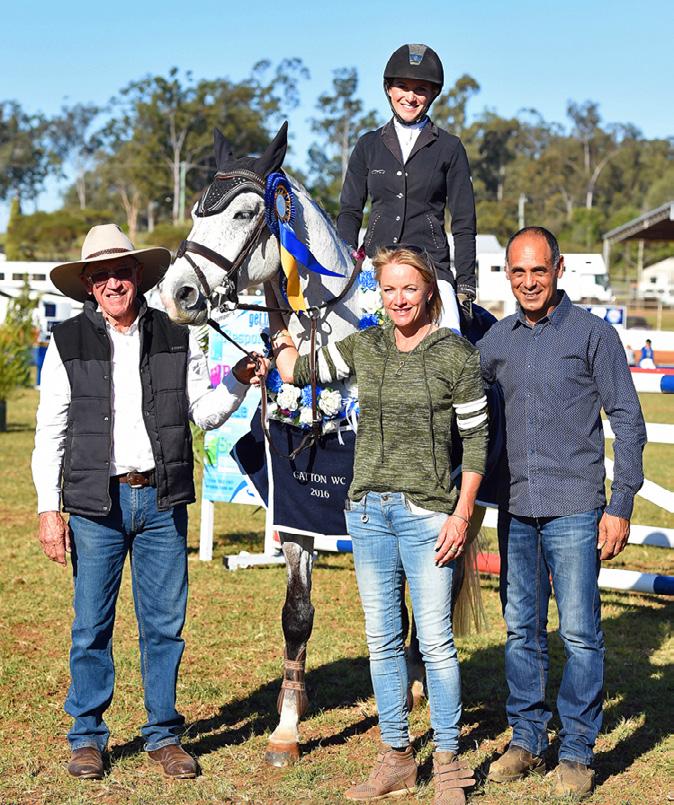
I learned that it wasn’t just a matter of sitting on top and pointing ... that gave me quite a kick up the bum!
Dad always said that my schooling was important so I did it. Dad was probably the one who helped me if I got stuck, but on the whole I just had to get in the truck, get on with my work and if I had a problem I’d ring the teacher.” Character building to say the least! and the Hamoods secured the contract to provide 38 horses for the 2010 Singapore Youth Olympic Games. “We had to procure, train and deliver the horses to Singapore, and that’s when I decided to leave school and pursue a career in show jumping,” she explains. “My grandfather, mum and I flew around the countryside trying out about 110 horses I think it was, before buying the 38. Then, with another two riders and a team of grooms, we began training – and that was basically our life for 18 months.”
The workload was intense, but for fresh out of school Olivia Hamood, the lessons learned were invaluable. “We had an overall budget for purchasing the horses, but we paid very different amounts for each one. Yet at the end of the 18 months,
Riding for Ludo Philippaerts at the Arezzo Tuscan Tour in Italy (Image by Plastic Foto Sport).
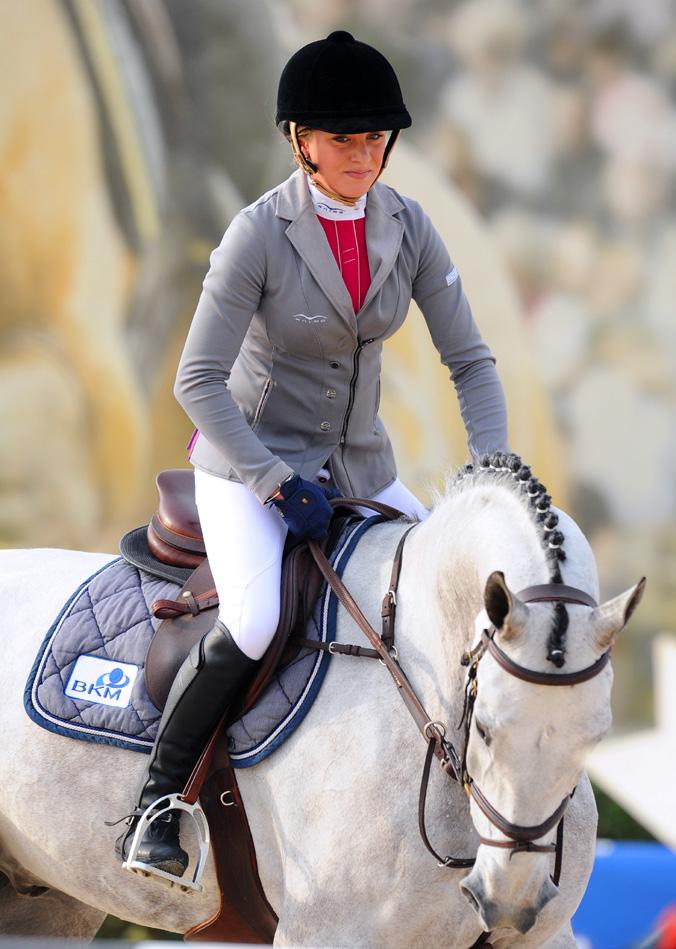
we had a broad selection of horses that were all at the same level. After the first day of the Youth Olympics there were, I think, 12 horses all tied on penalties. So it taught me just how much you can do with different horses to get them onto an even playing field, regardless of what you might have originally paid for them.”
I take the point: it’s talent over price tag. “Oh, absolutely! It’s talent that counts plus a good education,” she says. “Something we became aware of while training so many different horses at once was that some had to be lifted up, while others just needed to be kept going. Still, it was a big job to get all of them to exactly where we wanted them to be.” And as anyone who has ever worked with a bureaucracy will tell you, paperwork is king – another eye-opener for Olivia. “Because we were dealing with the government everything had to be very professional,” she recalls. “We had to produce nutritional reports, farrier reports and vet reports every month. The office management side of it was just massive, but it’s something that has had a big influence on the way I run my business now, even though it’s on a much smaller scale.”
Olivia has travelled the world to compete, and her globe-trotting started early with a trip to Korea in 2009, when she was a member of a junior team along with Tom McDermott and Tom Sedger. But it was thanks to the Singapore Youth Olympics project that Olivia got a significant break in her career. While in Singapore, she met Belgium based showjumper Ludo Philippaerts, a four-time Olympian with some serious international successes to his name.
Ludo was so impressed with the then 18-year-old that he invited her to visit his stables in Belgium. “And that was such a big opportunity. But at the time Mum felt I was too young to go and held me back for a year. It was in 2012 that I eventually went to Europe and spent three months in Belgium and Italy with Ludo,” Olivia recalls. But even before arriving home in Australia she knew Europe was where she needed to be, so she applied for a 13-month visa and headed back to Europe with two of her own horses, Eternal Flame and Carado GHP.
What followed was the stuff of dreams. Ludo and the team took Olivia with them wherever they went, giving her the opportunity to compete at a variety of 5* events: the Mechelen World Cup, shows in Portugal, Italy, France - essentially all over Europe.
I remark that at just 19, the experience must have been life-changing. She agrees: “Previously when I’d travelled overseas, I was with my family or a support crew whom I knew, so to go to Europe at that age with two horses of my own was really daunting at first. Now I look back on it as one of the best experiences of my life. It’s probably where things really opened up for my career.”
One of the biggest take-homes for Olivia, was the degree of professionalism she saw in Europe: “It’s another world over there as far as the horse dealing goes, the way competitions are run, the everyday work ethic, the whole thing. It’s next level. So that’s something I’m aiming for, to one day go back with my own horses.”
But before returning to Australia in 2013, Olivia and her mare Eternal Flame were selected to compete with the Australian Nations Cup Team in Portugal,
an unforgettable experience that firmly cemented her desire to ride for Australia again.
And once back on home soil, Olivia and Carado wasted no time in making their presence felt with a stellar few years. “Probably one of the highlights was winning the 2016 Australian Championship Grand Prix and placing third overall in the Australian Senior title - that was special," she says, "then he went on to win two Boneo Cups. We did a lot of good things together. But if you want to stay in the sport, the time comes when you have to part ways and he was sold in December 2018.”
For Olivia, the parting wasn’t easy: “That horse had been around the world with me and to see him leaving, that’s a feeling I’ll never forget. It was horrible, the hardest thing I’ve ever had to do. I was happy for him but so sad at the same time. But it’s just what you have to do when you’re a professional rider. And to watch him succeed now makes me so proud. He was sold to Annabelle Francis, a top little rider in New Zealand, and within the first four months of her having him she had won the Takapoto Gold Grand Prix, so that was a huge feather in his cap.”
In an odd twist of fate, around the time Carado was sold, Paula, who had unfortunately suffered a broken ankle, handed the reins of her top mare Jane Fonda over to Olivia. “She’s probably the best mare I’ve ever had, and 2019 is probably the best year I’ve ever had,” she recalls.
And that’s saying a lot when you look at some of Olivia’s previous successes, which include representing Australia three times, being named Equestrian Queensland Sport Star of the Year twice, winning the Gatton World Cup, and in 2016 winning both the Boneo Cup Grand Prix and the Australian Championships Grand Prix.
But for Olivia, one of her biggest achievements was placing second in the 2019 Australian Senior Championship with Jane Fonda. “That was a huge deal for me because it attracted some serious
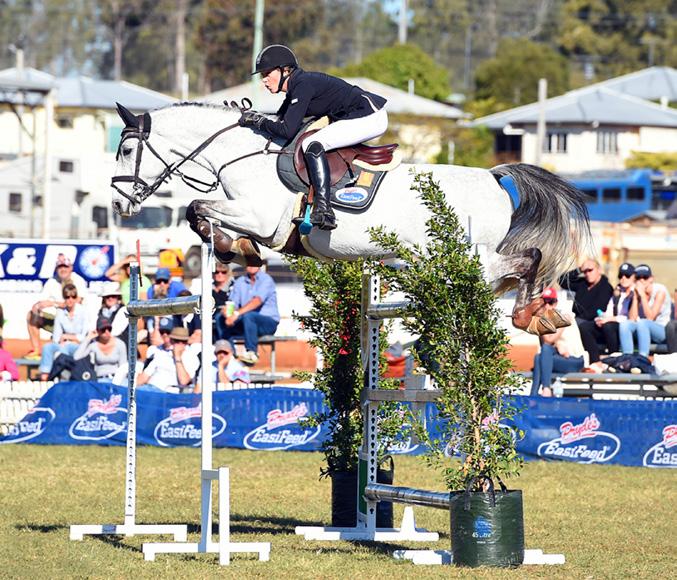
ABOVE: Carado GHP jumping to 6th place in his first World Cup at the 2016 Gatton World Cup Show. Olivia won the class on Nero GHP (Image by Oz Shotz). BELOW: With Knockout III, owned by Linda and Graham Huddy, at the 2018 Boneo Cup Classic (Image by Stephen Mowbray).
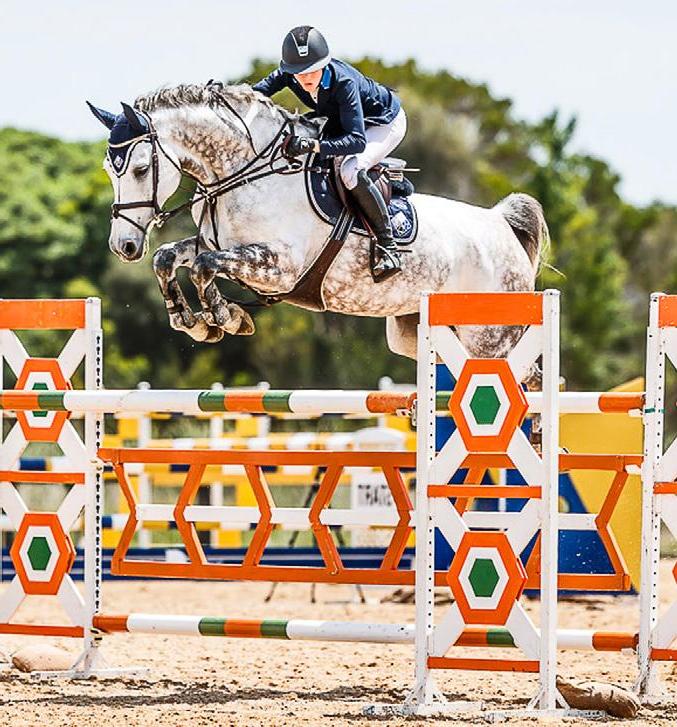
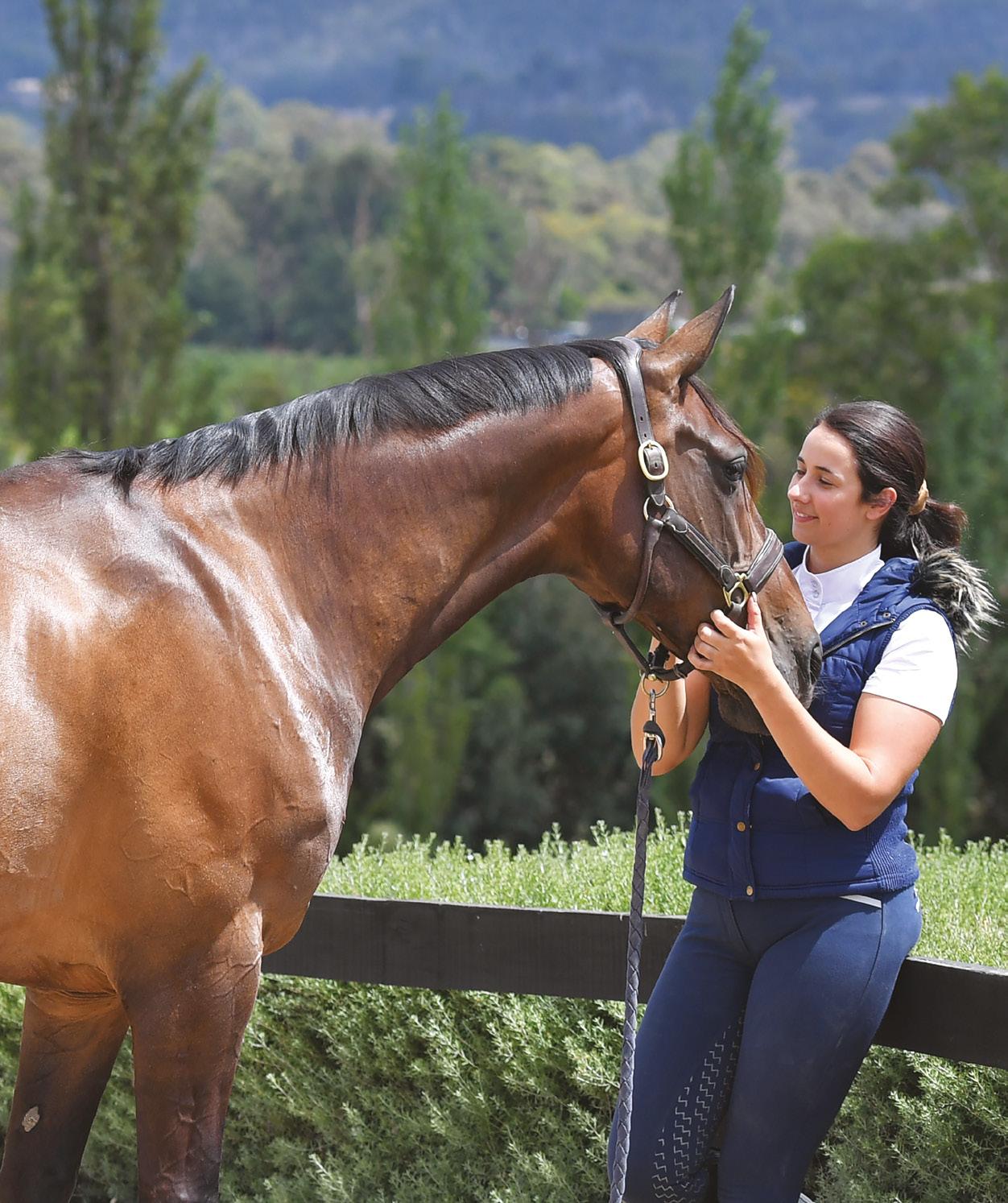
prize money,” Olivia explains. “Then I came second to Chris Chugg - a bit of an idol of mine - and Levilensky in the Willinga Park Grand Prix, and second to Chris again in the World Cup decider at the end of the year. They were in the region of $25,000 classes so that was a big thing – and Dad was certainly happy on the drive home!”
Olivia seems to have a knack for finding top showjumpers, and when she’s on the hunt, she has a very specific check list. “Probably the first thing I look for is a good temperament and a big heart. I think that with those two things in place, other qualities can be worked on. But they’ve also got to be careful,” she adds, “they can have any technique but if they’re not careful they’re not going to be any good to you. So heart, temperament, and carefulness are probably my top priorities.”
But while ability is essential for the horse, it’s also prerequisite for the rider, and that includes mindset. Olivia has some strong views on the subject: “Before a big class I like to go somewhere quiet to just be alone. I don’t like to do anything else other than that, and I don’t like talking to anyone because I find that the smallest of things can influence your mindset. And by the time I go into the arena, I’m completely focussed. All I’m thinking about is myself and my horse and the job we have to do. The rest is just a blur.”
Currently Olivia has a seven-horse show team in place, which she says is the best she’s ever had. Besides Jane Fonda, the line-up includes Alan 111 Z, Knockout 111, and Lola GHP, three great horses all owned by Linda and Graham Huddy, who are, in Olivia’s opinion “absolutely fantastic owners.” Besides Olivia’s team, there are an additional nine horses in work in the Glen Haven Park stable, with close to 50 horses on the property all told. “We also breed here as well as doing some spelling and pre-training. There’s no time for anything else but horses,” says Olivia, who puts in close to 12 hours a day - nine hours riding and another three managing the stables - six days a week. Olivia with Linda and Graham Huddy’s Alan III Z in the Mini Prix at the 2018 Summer Classic (Image by Stephen Mowbray).

of flatwork. “I think nearly 80 per cent of our riding is based on that. Without flatwork you’re fighting an uphill battle when you get to the higher levels,” she explains, “it’s the discipline that allows you to place your horse on an exact take-off spot. The horse needs to be so adjustable that you can put them wherever you want. We’re talking within inches. It can be the difference between leaving a 1.60m fence up or not, and that can be the difference between winning or not.” As we bring the conversation to a close, Olivia offers up a few final thoughts. “You know the old saying: you don’t give up, you get up? That sums up the horse world. It’s relentless and it’s hard work but if you want it badly enough, you’ve just got to keep going. That, and the support of your family, is probably the biggest thing in this sport.”
Then there’s the ability to deal with pressure, and Olivia has had her fair share of that. “Coming from a horsey family people think you’re lucky, and you are,” she says thoughtfully, “but the issue there is that as Paula Hamood’s daughter, they expect a lot of you, and that’s additional to the pressure you put on yourself! So that’s something that you have to learn to overcome. No matter what people think, success is not simply a result of your circumstances. It’s not that simple. There are always pluses and minuses.”
